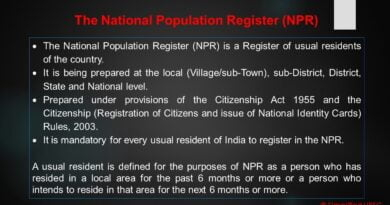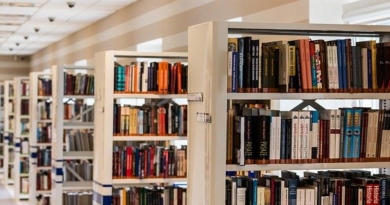Former RBI governor Urjit Patel has been appointed vice-president of the Asian Infrastructure Investment Bank (AIIB)
Context:
In October 2021, the Union Minister of Finance participated in the 6th Annual Meeting of the Board of Governors of AIIB.
Contents
Why is in news?
- Former Reserve Bank of India (RBI) governor Urjit Patel has been appointed as a vice-president of the Beijing-based Asian Infrastructure Investment Bank (AIIB), a multilateral funding institution for three-years tenure
- He will succeed outgoing vice-president D.J. Pandian, who is in charge of sovereign and non-sovereign lending of the AIIB in South Asia, the Pacific Islands and South-East Asia, AIIB
- AIIB currently has five vice-presidents.
- Urjit Patel has previously worked with the International Monetary Fund (IMF), Boston Consulting Group and Reliance Industries among other organisations.
- He had taken over as the 24th Governor of the Reserve Bank of India (RBI) succeeding Raghuram Rajan on September 5, 2016.
- He resigned in December, 2018 “on account of personal reasons”, saying “I have decided to step down from my current position effective immediately”.
- Prior to taking over on September 6, 2016, he was a Deputy Governor overseeing the monetary policy department at the RBI under Rajan and was known as his “inflation-warrior”.
- India is a founding member of AIIB with the second-highest voting share after China. It is headed by the former Chinese vice-minister for finance, Jin Liqun.
About Asian Infrastructure Investment Bank (AIIB):
- The Asian Infrastructure Investment Bank (AIIB) is a multilateral development bank that aims to improve economic and social outcomes in Asia.
- The bank currently has 103 members as well as 21 prospective members from around the world.
- Headquarters Beijing China
- Formation: 16 January 2016
- The bank started operation after the agreement entered into force on 25 December 2015, after ratifications were received from 10 member states holding a total number of 50% of the initial subscriptions of the Authorized Capital Stock.
- The United Nations has addressed the launch of AIIB as having potential for “scaling up financing for sustainable development and to improve the global economic governance.
- The starting capital of the bank was US$100 billion, equivalent to 2⁄3 of the capital of the Asian Development Bank and about half that of the World Bank.
- The bank was proposed by China in 2013[9] and the initiative was launched at a ceremony in Beijing in October 2014.
- It received the highest credit ratings from the three biggest rating agencies in the world, and is seen as a potential rival to the World Bank and IMF.
AIIB Objectives
The objectives of the AIIB are listed below:
- Promoting sustainable economic development, creating wealth and augmenting infrastructure connectivity in Asia by investing in infrastructure & other productive sectors.
- Fostering regional partnership & cooperation to address developmental challenges by working in tandem with other bilateral and multilateral developmental institutions.
- Enhancing investment in private & public capital for development purposes.
- Using the resources at its disposal for funding development in the region, including projects that will contribute to the balanced economic growth of the region.
- Promoting private investment in enterprises, activities and projects contributing to economic development in the region wherever private capital is not available.
Governance of Asian Infrastructure Investment Bank
- Each member country is bound to appoint one Governor and one Alternate Governor. These appointed Governors have all the major powers of the Asian Infrastructure Investment Bank
- These Governors and Alternate Governors can further hand over the powers and responsibilities to the Board of Directors
- The first meeting of all the Board of Governors, AIIB was held in Bejing, China in 2016, followed by the second meeting in Jeju, Korea in 2017. The third meeting of the Board of Governors was held in Mumbai, India in 2018
- Luxembourg will be the first country outside Asia where the AIIB’s annual Board of Governors meeting was held in 2019
Finances of AIIB
The initial total capital of AIIB is 100 billion dollars of which:
- 20% is paid-in share capital which means that it is already paid by the investors in exchange of shares
- The remaining 80% is called-up share capital
- The largest contributor to AIIB is China and the second-highest shareholder is India
- A co-financing framework agreement has been signed by AIIB with World Bank and three nonbinding MoU’s have been signed with Asian Development Bank, European Bank for Reconstruction and Development and European Investment Bank
Annual Meeting
- The first AIIB Board of Governors meeting was held in Beijing, China in 2016.
- The second was held in Jeju, Korea in 2017 and the third was held in Mumbai, India in 2018.
- On July 12-13, 2019 Luxembourg will host AIIB’s first Annual Meeting to be held outside Asia.
- The theme of the 2019 Annual Meeting is “Cooperation and Connectivity” in recognition of the economic and social benefits to be realized through better connectivity within and between countries and regions, including Europe and Asia.
Membership:
There are more than 103 members now.
Fourteen of the G-20 nations are AIIB members including France, Germany, Italy and the United Kingdom.
Voting Rights:
China is the largest shareholder with 26.61 % voting shares in the bank followed by India (7.6%), Russia (6.01%) and Germany (4.2 %).
The regional members hold 75% of the total voting power in the Bank.
Various organs of AIIB:
- Board of Governors: The Board of Governors consists of one Governor and one Alternate Governor appointed by each member country. Governors and Alternate Governors serve at the pleasure of the appointing member.
- Board of Directors: Non-resident Board of Directors is responsible for the direction of the Bank’s general operations, exercising all powers delegated to it by the Board of Governors.
- International Advisory Panel: The Bank has established an International Advisory Panel (IAP) to support the President and Senior Management on the Bank’s strategies and policies as well as on general operational issues.
AIIB Lending
- The recipients of AIIB financing may include member countries (or agencies and entities or enterprises in member territories), as well as international or regional agencies concerned with the economic development of the Asia-Pacific region.
- The AIIB has signed a co-financing framework agreement with the World Bank and three nonbinding Memoranda of Understanding (MOU) with:
- The Asian Development Bank (ADB),
- European Bank for Reconstruction and Development (EBRD), and
- The European Investment Bank (EIB).
- The bulk of AIIB’s operations are in South Asia.
- The Bank can lend outside Asia provided that it supports connectivity with Asia or it is for a global public good and that the loan significantly benefits Asia.
- The ceiling for non-regional loans is 25%.
- The key sectors for the Bank are Energy, Transport, Water and Urban development.
- About two-thirds of the loans approved by the bank have been co-financed with other multilateral lending institutions, including the World Bank and the ADB.
- The triple-A ratings from Standard & Poor’s, Moody’s and Fitch, reflect the Bank’s commitment to the highest standards of governance, enhanced transparency and accountability.
- Approved investment operations of AIIB reached USD 7.94 billion in April, 2019.
China’s Motivation for Creating the AIIB
The creation of the AIIB is part of a broader reorientation of Chinese foreign and international economic policy that has taken place since Xi Jinping became Chinese Communist Party General Secretary in 2012 and the President in 2013.
“One Belt, One Road” (OBOR) Initiative
- It identified 65 countries that will be participating in the initiative, which aims to use trade promotion, infrastructure development, and regional connectivity, to boost economic linkages between China and dozens of countries along a land route (the Silk Road Economic Belt) and a sea route (the 21st Century Maritime Silk Road).
- To realize this vision, China is investing in a range of institutions and initiatives, including the AIIB, and other funding mechanisms such as the Silk Road Fund (established in 2014) and the New Development Bank (also known as the BRICS Bank established in 2014), a collective arrangement with Brazil, Russia, India, and South Africa.
- China also seeks to influence the emerging structure of regional trade and investment relations.
- By helping to finance OBOR, AIIB may influence these relationships. It may also reinforce a regional infrastructure that has China as its hub.
- As a result, regional economies may be more inclined to augment trade and investment relations with China rather than with other economies, such as Japan, South Korea, Taiwan, and the United States.
AIIB and India
- India is the second-largest shareholder (7.6%) in the bank only to China.
- India is the largest beneficiary of AIIB financing for infrastructure projects.
- The projects in India span a range of sectors such as energy, water, transport, etc. including the Bangalore Metro Rail.
- The bank has also given approval for $500 million for a COVID-19 Emergency Response Fund and Health Systems Preparedness Project.
Concerns associated with AIIB
Some of the world’s leading economies like the USA and Japan are not members of the bank. The US is opposed to the bank because it considers the AIIB an unwelcome invasion of the multilateral financial system. There is also a perception that a bank is a tool for the expansionist agenda of the Chinese government. There is also a perception, reiterated by the non-resident board of AIIB, that the Chinese government can tightly control the bank’s operations.
Source: Economic Times
You can find many articles on INSTITUTIONS AND ORGANIZATIONS (part of GS II) in our website. Go through these articles share with your friends and post your views in comment section.
Discover more from Simplified UPSC
Subscribe to get the latest posts sent to your email.



